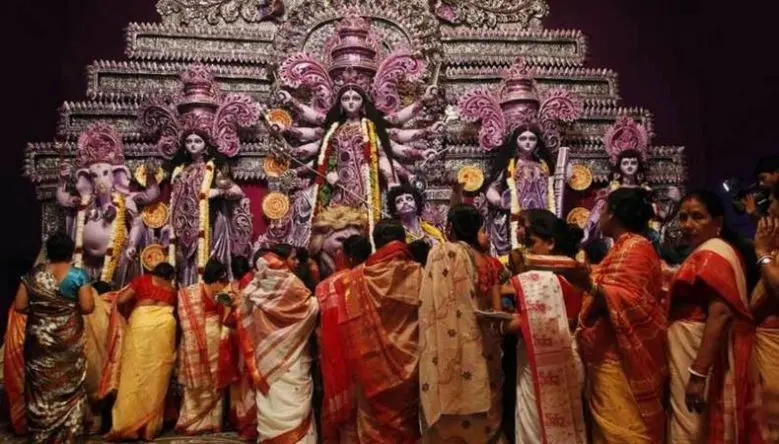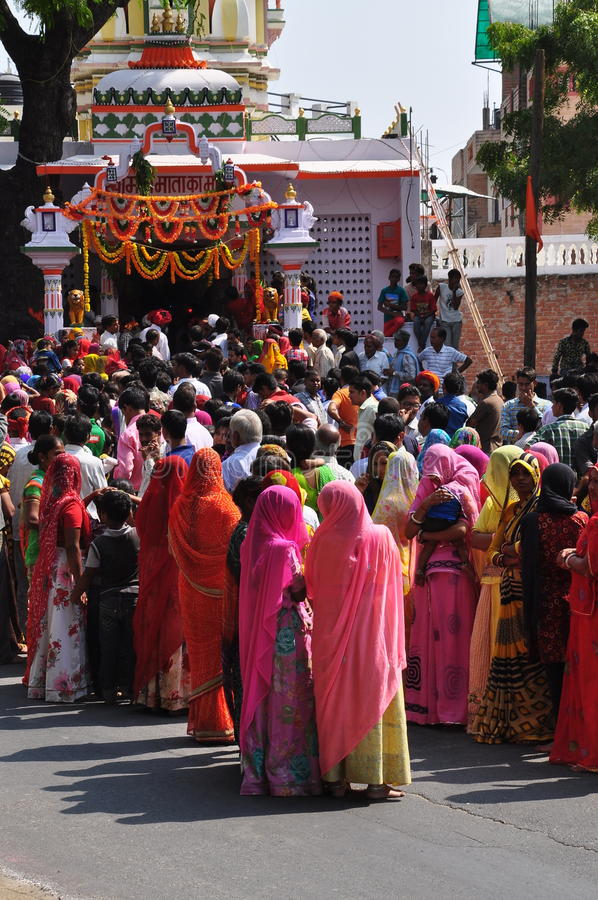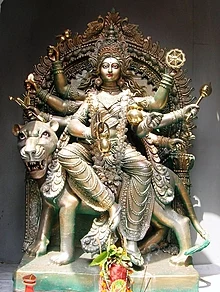The fourth day of Chaitra Navratri which falls on April 5th this year is dedicated to the veneration of the cosmic mother in it’s representation as goddess Kushmanda Maa.
Kushmanda word derives it’s name from Ku meaning a little, Ushma meaning warmth and anda meaning cosmic egg. This form of Durga, is depicted with eight to ten hands holding a trident, discus, sword, hook, mace, bow, arrow and two pots of Elixir and blood. Riding on a lion, the goddess’ one hand is in a blessing pose ” Abhaymudra” meaning to assure ultimate protection to the devotees. Her one hand is always on abhayamudra from which she blesses all her devotees. She rides on a lion

Hindu traditions believe that the universe ( Brahmanda) was born out of the smile of the Maa Kushmanda who produced the cosmic egg. She is considered the source of energy to the Sun.

Worshippers venerate the Shakti, the personification of cosmic female in the universe according to the Hindu thought in it’s representation as Mother Kushmanda on the 4th day of Chaitra Navratri. Like the “yin” and the “yang”, the “Purush” and “Prakruti” are the symbols of the twin forces of male and female synergy that propels the universe according to Hindu philosophy. Worshipping the cosmic female, as mother goddess is one of the most distinguished features of popular Hinduism.
The Hindu calendar, based on earth’s movement with respect to the moon, consists of 12 months which are divided into two fortnights according to the waxing and waning moon, named “Shukla Paksha” ( Light fortnight culminating on fool moon day) and ” Krushna Paksha” ( Dark fortnight culmination of no moon day).
Hindus celebrate Navratri or nine nights twice a year during the first 9 days of a Shukla Paksha, first in the 6th month of the Hindu calendar year, Chaitra and second, in the last month, Ashwin. In some parts, the Chaitra is considered the commencement of the new year, though.












